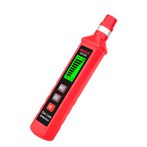Is the lead-free solder in a soldering iron toxic?
Solder wire is a material used for soldering with an electric soldering iron. Although its main component is tin, it also contains other metals. Mainly divided into lead and lead-free (ie environmentally friendly). With the introduction of the EU ROHS standard, more and more PCB welding factories are now choosing lead-free and environmentally friendly solder wires. Lead solder wire is also slowly being replaced, and environmentally friendly solder wires cannot be exported. Lead-free solder paste, lead-free solder wire, and lead-free solder bars are the main products currently on the market.
To put it simply: Hazardous Commonly used solder has a low melting point and contains about 60% lead and 40% tin, so the solder itself is toxic. Most solders on the market are hollow and filled with rosin, so the gas you mentioned is probably emitted when the rosin in the solder melts during welding. The gas emitted by rosin is also slightly toxic and smells quite unpleasant. The main hazard factor of soldering during welding is lead fume. Even lead-free solder contains a certain amount of lead. The limit value of lead smoke in GBZ2-2002 is very low, it is very toxic and requires special protection. Due to the damage caused by the welding process to the human body and the environment, in Europe, the protection of welding workers and the protection of the environment have been enforced in the form of legislation. Welding without protective measures is not allowed. The ISO14000 standard has clear regulations on the treatment and protection of pollution generated in the production process.
Tin all contains lead. In the past, the presence of lead in the solder wire classified soldering as an occupational hazard (in the National Occupational Disease Catalog). Now most of our companies use lead-free solder wire. The main component is tin, as measured by the Centers for Disease Control and Prevention. It is tin dioxide; it is not on the National List of Occupational Diseases. Generally speaking, lead fumes will not exceed the standard in lead-free processes, but soldering also has other hazards. For example, flux (rosin-like substances) has certain hazards. It depends on the specific situation. Employees can usually check the markings on the distributed tin and what category it belongs to, so that they can have evidence and request the company to make rectifications (they can provide suggestions to the factory's internal labor union). If the tin used contains lead, it will definitely be harmful to the body. Over time, they accumulate in the body and cause great damage to the immune system of the nervous system.
Lead-free solder wire is environmentally friendly, but it is also harmful to the human body. The low lead content of lead-free solder wire does not mean that it does not contain lead. Compared with lead-containing solder wire, lead-free solder wire is harmful to the environment and human body. Contamination is less than lead. The gases produced during soldering are toxic, including rosin oil, zinc chloride and other gas vapors.






